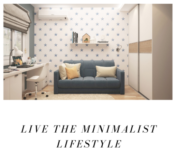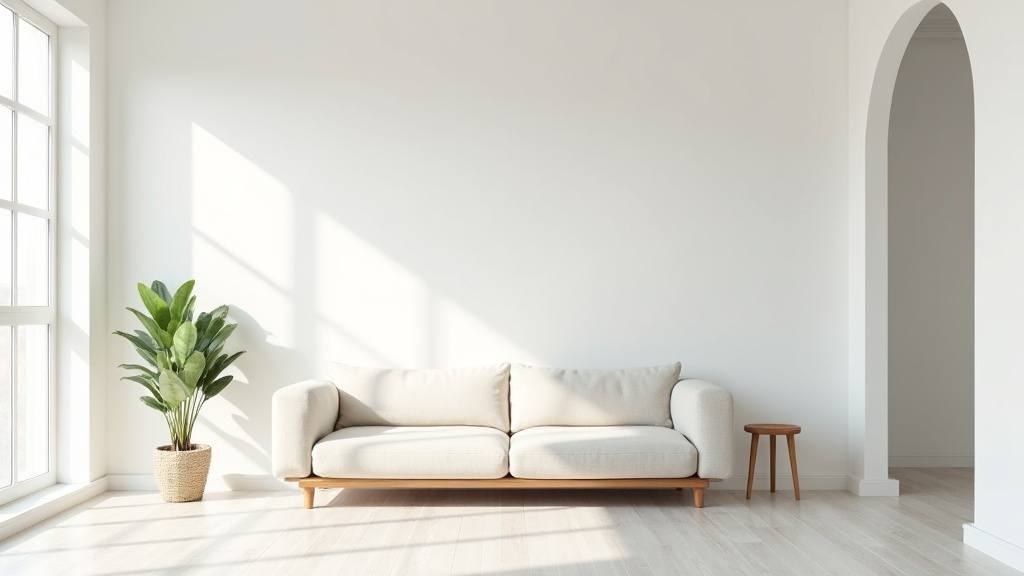Table of Contents
9 Rules for Minimalism: Practical rules to follow for Success
Minimalism isn’t just about having fewer things; it’s about making more space in life for what truly matters. Whether you’re hoping to make your home feel less cluttered, reset your mind, or simply spend more time on things that make you happy, 9 rules for minimalism can help you get there.
If you’ve ever felt overwhelmed by clutter or like your environment is holding you back, you’re definitely not alone. Many people want more calm and simplicity, but figuring out where to start can feel a bit confusing. What counts as “minimalist” anyway? Does it mean empty shelves, a capsule wardrobe, or skipping out on stuff you actually enjoy?
This article breaks down nine straightforward, practical rules for minimalism. Each one is meant to help you clear out the excess—physically, mentally, and even emotionally—so you can focus on what matters to you. No strict instructions or tests for perfection, just simple steps that make life a bit lighter and more meaningful. Along the way, you’ll track down new ways to bring calm and intention into your daily space, too.
1. Start with Intentionality
Minimalism always begins with intention. It’s not about getting rid of stuff for its own sake; it means choosing what you really want in your space and your life. Asking yourself “why” you want to simplify helps you stay focused and motivated, especially once the excitement of decluttering wears off.
How to Set Your Minimalism Intentions:
- Ask yourself what you hope to gain (more time? less stress? freedom to travel?).
- Write a few intentions or goals. For example, “I want my living room to be tidy and restful,” or “I want to free up time to spend with friends.”
- Remind yourself of these goals before each decluttering session.
Staying purposeful makes the process less about loss and more about creating the life you want. Try journaling your intentions or even putting a reminder on your phone so it’s front and center.
2. Declutter by Category, Not by Room
Trying to tidy one room at a time can leave you feeling like you’re chasing clutter in circles. Focusing on one category (like books, clothes, or kitchen gadgets) at a time works better. This way, you see how much you really own and avoid duplicating effort.
Popular Categories to Start With:
- Clothing (including shoes and accessories)
- Books and magazines
- Kitchenware and gadgets
- Toiletries and makeup
- Papers and documents
Working by category also helps you make fair comparisons, so it’s easier to decide what stays and what goes. Plus, it minimizes the risk of missing hidden items you would otherwise skip if working room by room.
3. Keep Only What Adds Real Value
The main principle of minimalism is keeping only things that bring real value to you. This can mean they’re super useful, make you happy, or help you live out your values.
Quick Ways to Decide What Stays:
- If you use it often, it earns its spot.
- If it makes you smile or feel good, that’s value too.
- If it supports your goals or daily routine, keep it around.
- If it’s broken, duplicates something else, or brings up negative feelings, it’s probably time to let go.
Asking yourself “Do I really need or love this?” gets easier with practice. If you’re not sure about an item, try putting it in a box for a month. If you don’t miss it, let it go. This approach works for everything from clothing to kitchen gadgets.
4. Practice the “One In, One Out” Rule
Once you’ve pared down your stuff, it’s super important to keep clutter from sneaking back in. The “One In, One Out” rule is a simple way to do that. Every time you bring something new into your home or wardrobe, get rid of a similar item. This keeps things balanced and helps you stay mindful about new purchases.
Everyday Examples:
- Buy a new sweater? Donate or recycle an old one.
- Pick up another coffee mug? Pass one on.
- Upgrade your phone? Recycle the old device instead of stuffing it in a drawer.
Making this a habit is probably one of the easiest ways to maintain a minimalist space long term. You can even use this rule with digital items, such as apps or files.
5. Prioritize Quality Over Quantity
Minimalism isn’t about doing without; it’s about doing better with less. Investing in higher quality, longer lasting items means you buy less overall and usually end up more satisfied.
Why Quality Matters:
- Quality items tend to last longer, saving you money and headaches down the road.
- They function better and often look nicer, making daily life feel a bit more special.
- It’s easier to appreciate the things you have when everything actually works or fits well.
If cost is a concern, you don’t have to go for top brands. Even just choosing sturdy basics over trendy impulse buys makes a big difference. Think about quality when you shop: opt for classic styles or durable materials, even in simple things like kitchen pans or phone chargers.
6. Clear Flat Surfaces Daily
Countertops, coffee tables, and dressers are magnets for random stuff. Keeping these areas clear is almost like hitting a reset button for your space. Even if the rest of the house isn’t perfect, cleared off surfaces can help your space feel orderly and inviting.
Tips for Clear Surfaces:
- Pick a time each day (like after dinner or before bed) for a five minute tidy.
- Resist putting mail, bags, or keys on tables; make a dedicated spot for them instead.
- Limit display surfaces to only your favorite decorative pieces (if any).
This small habit gives you quick wins and helps keep chaos in check. It can also highlight what you truly enjoy seeing every day, making your personal style pop.
7. Limit Digital Clutter
Minimalism isn’t just about physical stuff. Digital clutter piles up fast between overflowing email inboxes, hundreds of photos, or too many apps. Clearing digital clutter frees up your devices, saves time, and can even reduce stress or distraction.
Easy Ways to Declutter Digitally:
- Unsubscribe from emails you never read.
- Delete apps or programs you don’t use.
- Organize desktop and phone screens with only essentials.
- Keep photo albums tidy by deleting duplicates or blurry shots.
- Set regular reminders to sort and back up important files.
Even clearing a handful of notifications or archiving old chats can make your digital life feel lighter. Try creating folders for important categories so files are easy to track down later—this takes a few minutes but can save a lot of time in the long run.
8. Set Boundaries, Not Just Limits
Minimalism is as much about your time and energy as it is about your stuff. Learning to say “no” or protecting your own space is a key part of simplifying life. When you say yes only to things that matter most, you free yourself from overcommitting.
Simple Ways to Set Boundaries:
- Block out free time on your calendar just for yourself; treat it like any other appointment.
- Limit how many activities, subscriptions, or commitments you take on.
- Let people know when and how you’re available, especially for work or social obligations.
- Prioritize downtime, quiet, or whatever helps you recharge.
Making space for rest, hobbies, or even just doing nothing is a big part of living minimally. Don’t hesitate to reassess your boundaries often—life changes, and so should your personal limits.
9. Celebrate Progress, Not Perfection
Minimalism isn’t a project with a clear finish line. There’s no perfect number of possessions or an ultimate minimalist scorecard. Every little step that makes space for what you value counts as a win.
How to Stay Encouraged:
- Take before and after photos as you declutter; seeing progress is motivating.
- Share successes (even small ones) with friends or fellow minimalists.
- Give yourself permission to pause or change your mind as needs or seasons change.
Your version of minimalism is unique to you. Give yourself credit for every switchup that feels right for your life. Remember, minimalism is about enjoying the ride, not stressing over the details.
Minimalism as a Lifelong Practice
Minimalism isn’t just about having fewer things on a shelf; it’s really about freeing up your life so you can focus on priorities, passions, and the people you care about. Over time, the habits get easier, and the benefits become even clearer. It’s also about letting your environment reflect your purpose and helping you get a sense of what you truly want out of life.
If you’re thinking about getting started, remember that you don’t have to do it all at once. Even the smallest change—a clear desk, a pared down closet, an afternoon with no plans—can help you feel a bit more at home in your space and daily routine. There’s no right or wrong way to approach it, just what works best for you. Try tracking your progress over several weeks and check in with your original intentions. Over time, you’ll stumble upon a balance that gives you more freedom and less stress, both inside your home and in your mind. Wrapping up, living with less leaves more room for what truly lights you up.

